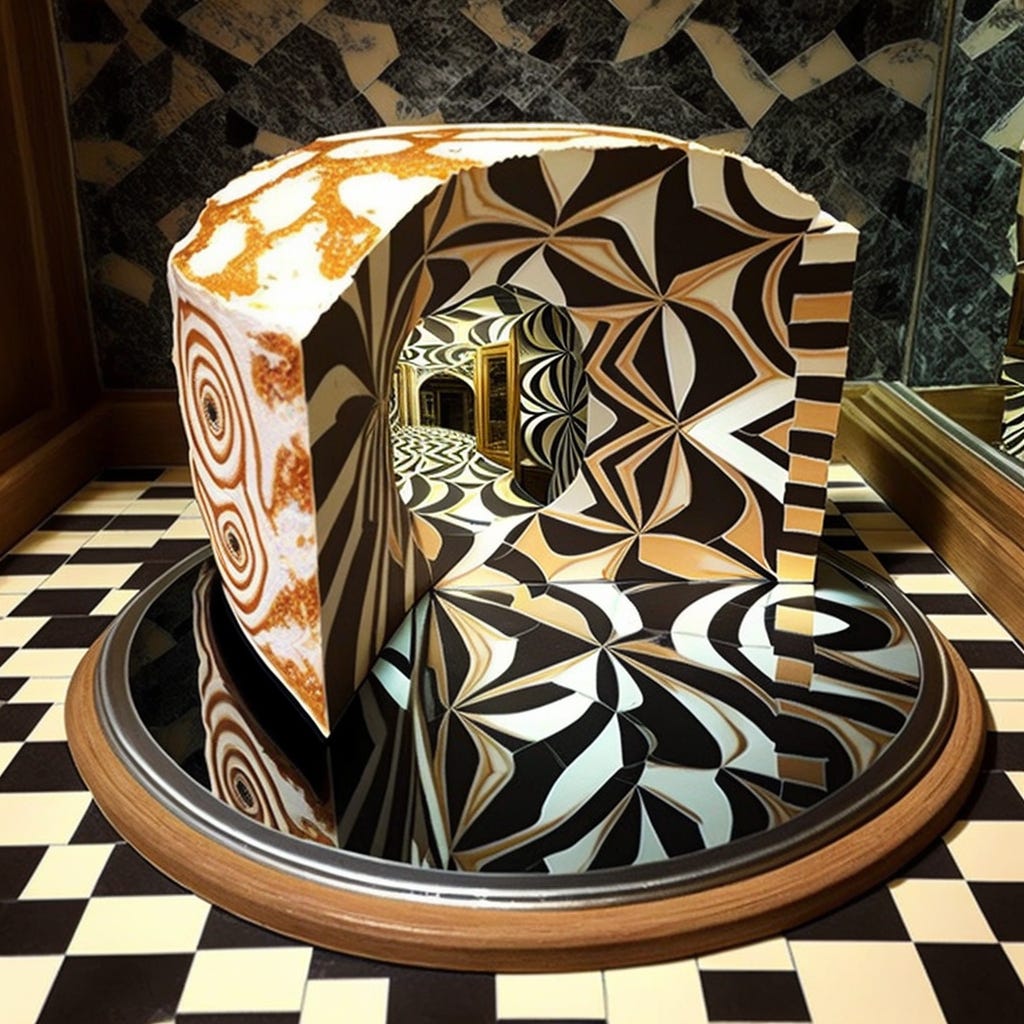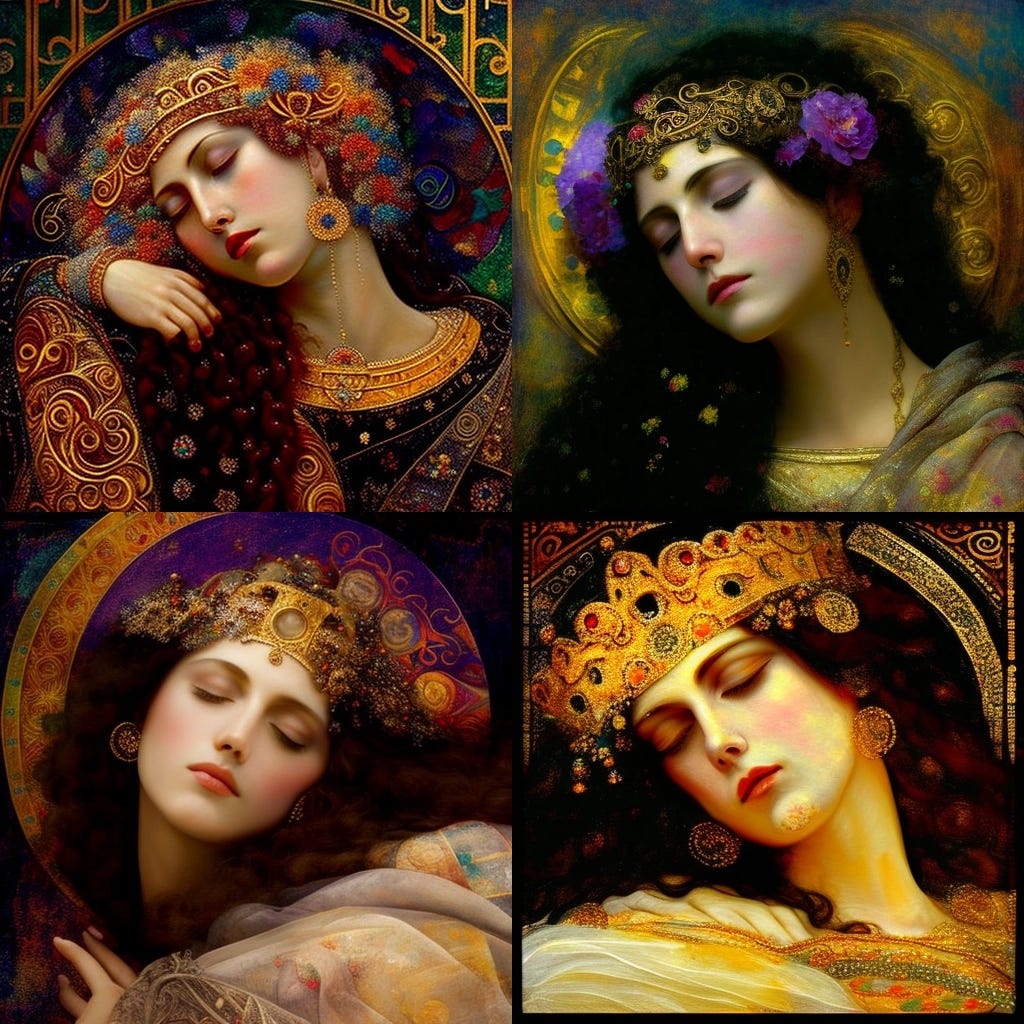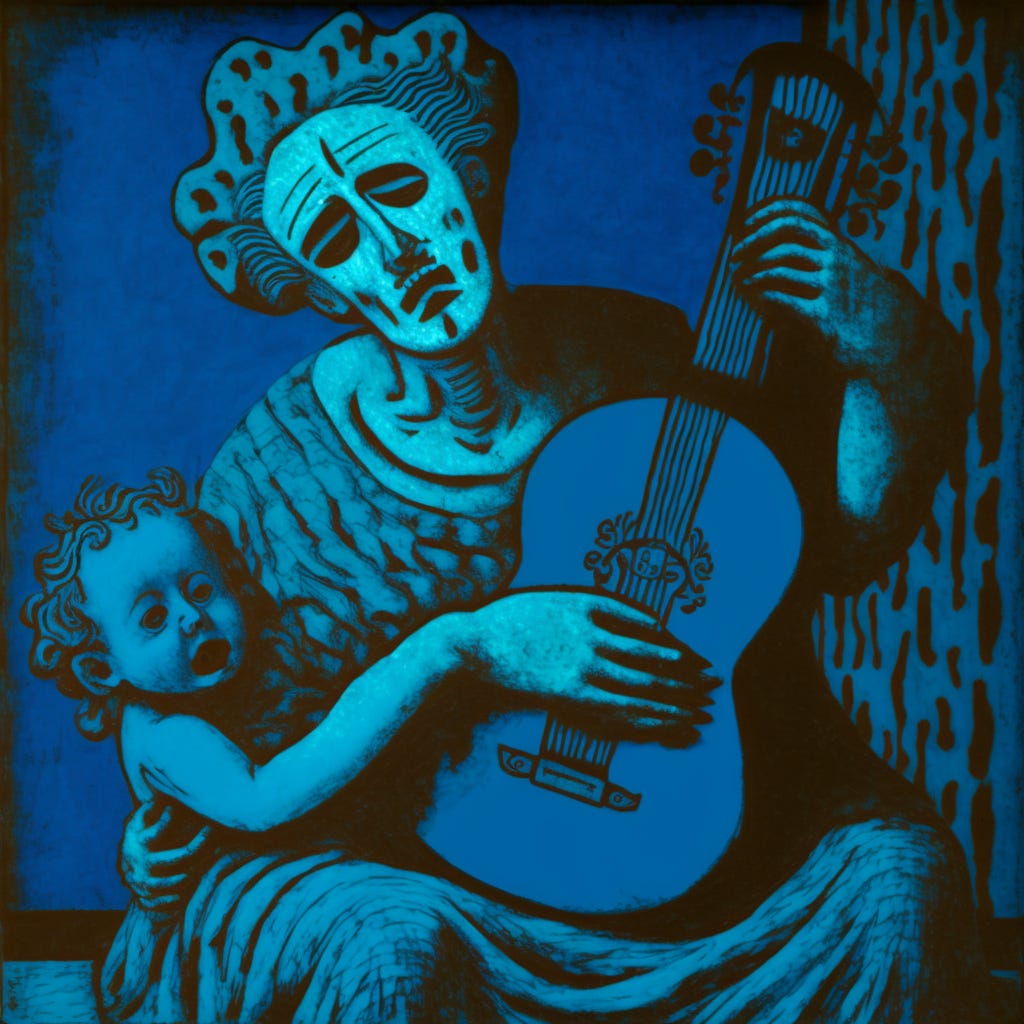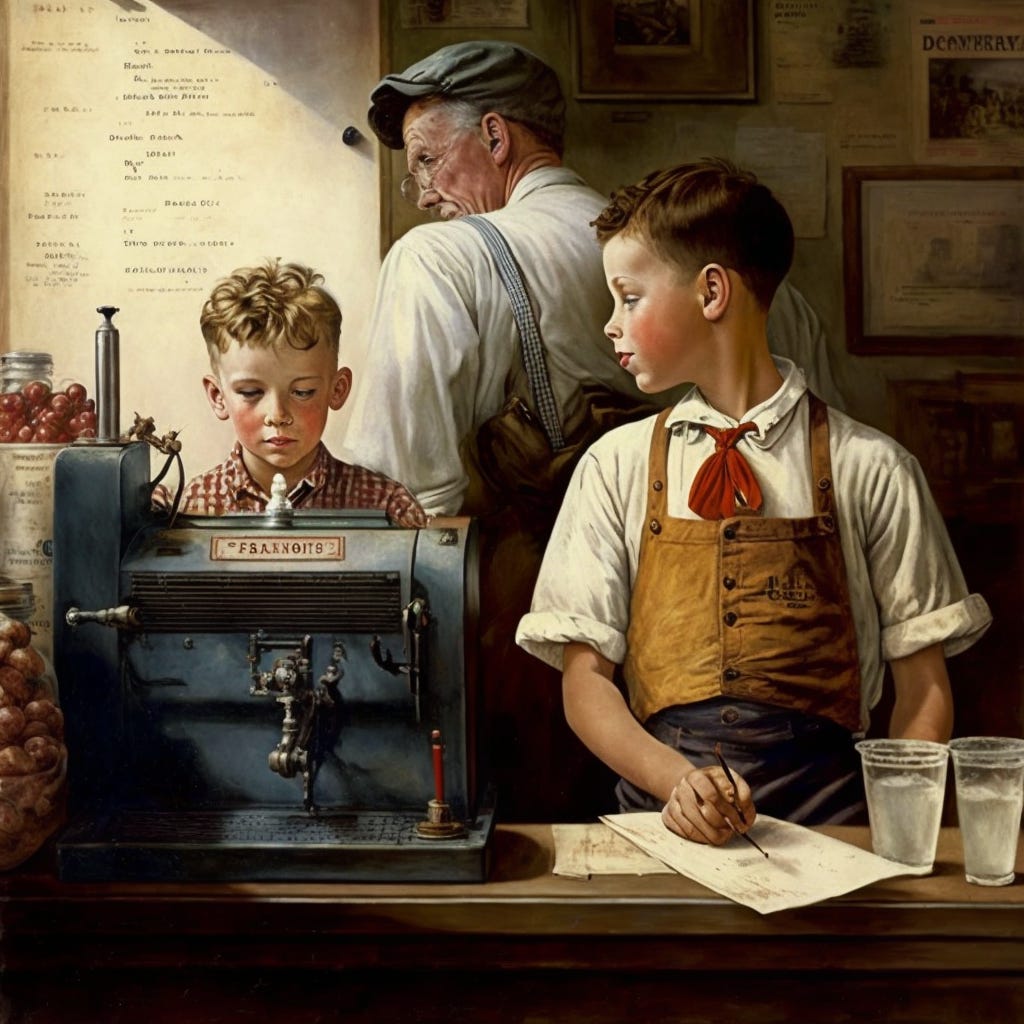Midjourney is only one of several A.I. art-generating applications that are available at the moment. I realize A.I. “art” is a sensitive topic to many but I’m not terribly worried that it will replace human creativity—except maybe when it comes to “content-generation,” which I personally don’t consider to be all that creative. When A.I. gets it wrong, it really gets it wrong and, while the sophistication of the algorithms are daily being refined and improved upon, I feel that the lack of human intuition will in the end prove the limitations of the tool.
Midjourney has become something of a private obsession of mine ever since a friend (in his early 30s) showed me (old dude in his 50s) how to use it. So far I’ve been able to make awesome illustrations for my stories on Substack, but I’ve also been using it as a sort of meditation tool, like the reading of Tarot cards.
Sidebar: Speaking of Tarot cards, Italo Calvino’s The Castle of Crossed Destinies is a short novel about a group of people who gather in a castle and tell their stories by pointing at a spread of Tarot cards on a table. Then they choose a second path through the spread and reveal a second story, somehow linked to the stories of the other people at the table. Just thought I’d mention that, since it’s such a fun tale.
In the last two hours I’ve created hundreds of images “in the style of” a few famous modern masters. I employed very specific prompts that were (in all fairness) worded in a way that I hoped would tap into distinct qualities and peculiarities of each artist. Interestingly, my attempts to create images based on surrealists (like Salvador Dalí and René Magritte) have not yielded satisfactory results. This is philosophically compelling to me because it highlights the literalism of A.I. art. Separately, many artists’ styles and color palettes have been excluded from Midjourney. Therefore, things like the distinctly dunny ochres and yellows that Egon Schiele uses in his rooftop paintings or the way Georgia O’Keefe creates the elegant volutes of flowers can’t be reproduced in the application.
Below I’ve named the pieces based more-or-less on the prompts I used to generate them. As I mentioned the prompts have been intentionally catered to each artist whose style I was trying to get Midjourney to imitate. I’ve added my own personal critique in the captions of the twelve images below.
1. - Marble Cake in Marbled Mirror (M. C. Escher)

2. - Strange Feeling in the Stomach While Sleeping on the Edge of Destruction (Oskar Kokoschka)

3. - Woman Reacting to the Horror of Time Advancing (Lucian Freud)
4. - Byzantine Queen Dreaming of Herself in Love (Gustav Klimt)

5. - Weimar Nightclub Connected to a Windmill (George Grosz)

6. - Mother with Guitar Serenading Dying Babe (Pablo Picasso “Blue Period”)

7. - Department Store Closed, No One Told the Makeup Counter (Edward Hopper)

8. - Boy Teaching Brother How to Ring Up Customers (Norman Rockwell)

9. - Unhappy Street Sweep (Alfred Kubin)

10. - Lighthouse in a Field of Sunflowers (Vincent Van Gogh)
11. Salome Dancing Before the Head of the House Appropriations Committee (Lawrence Alma-Tadema)






